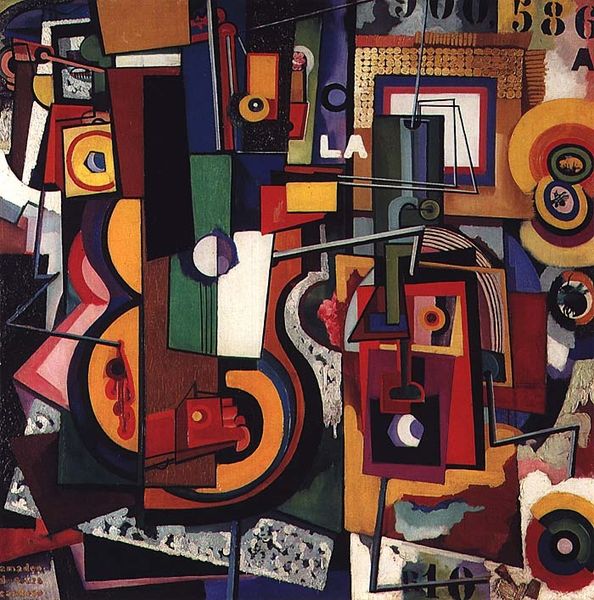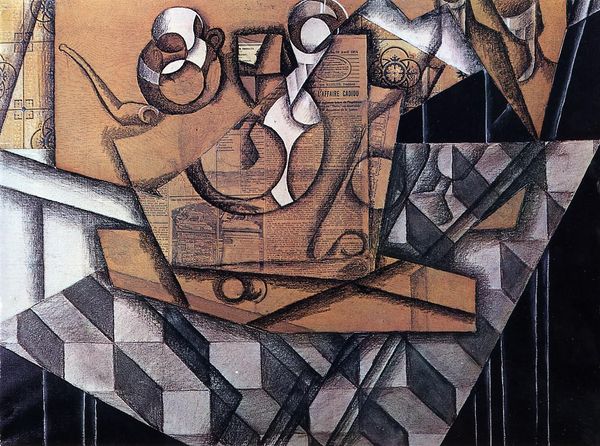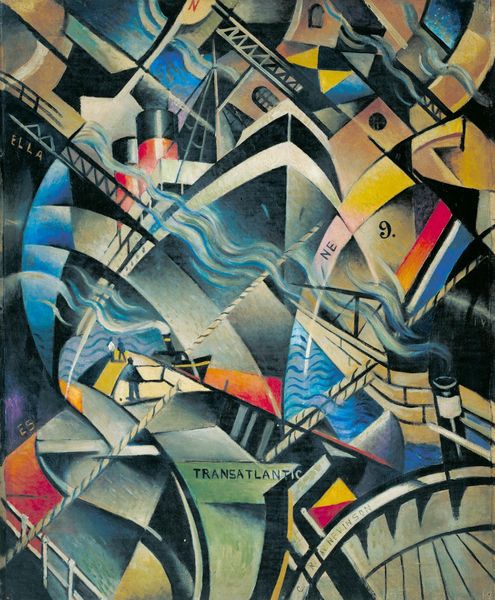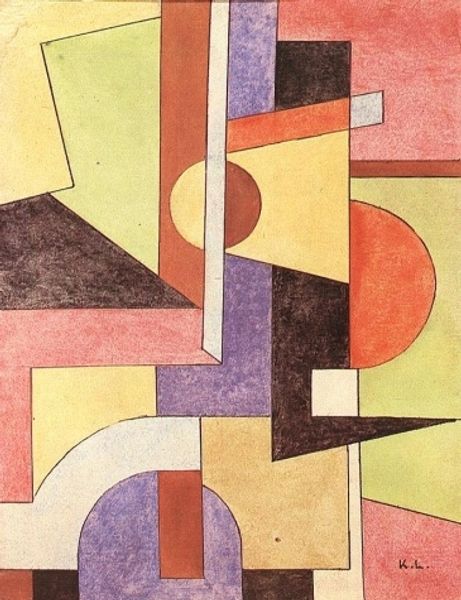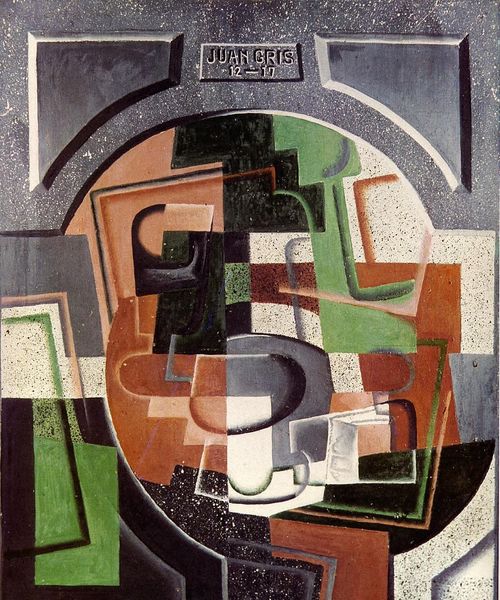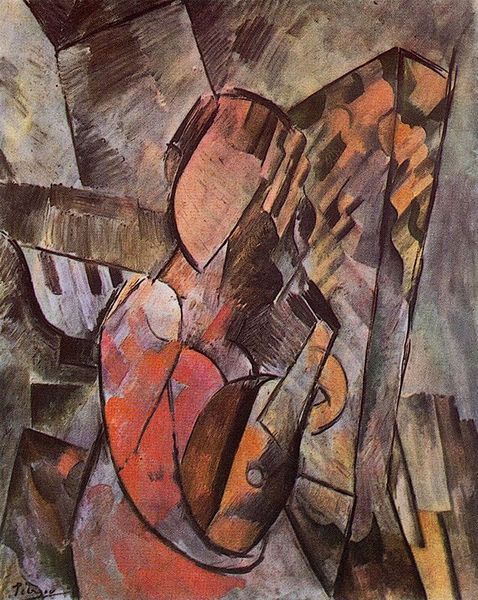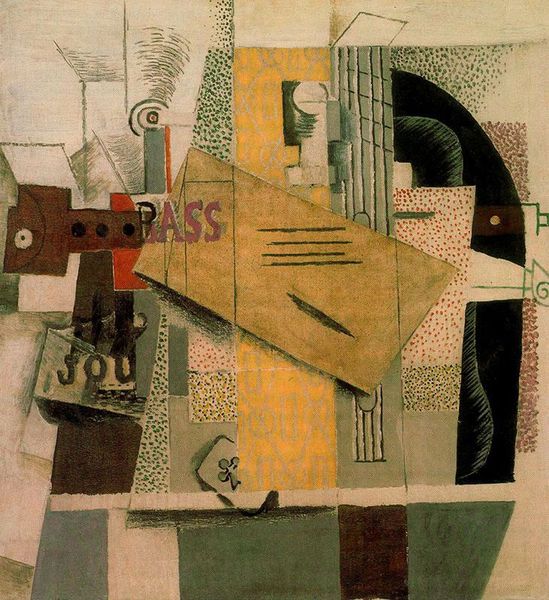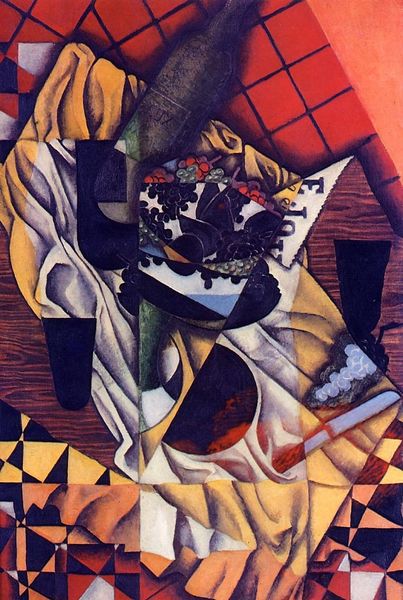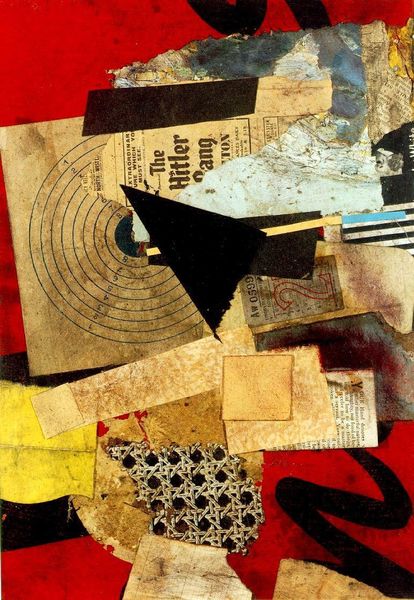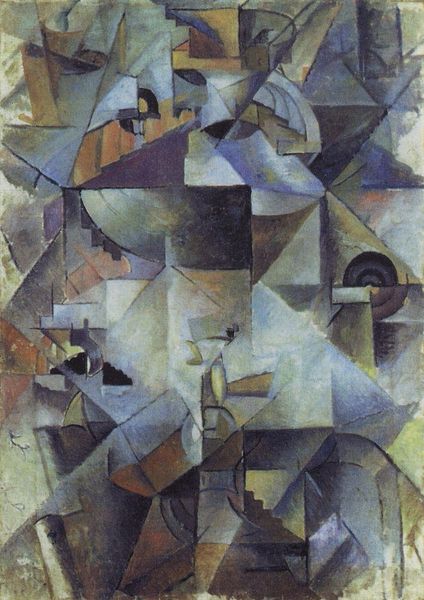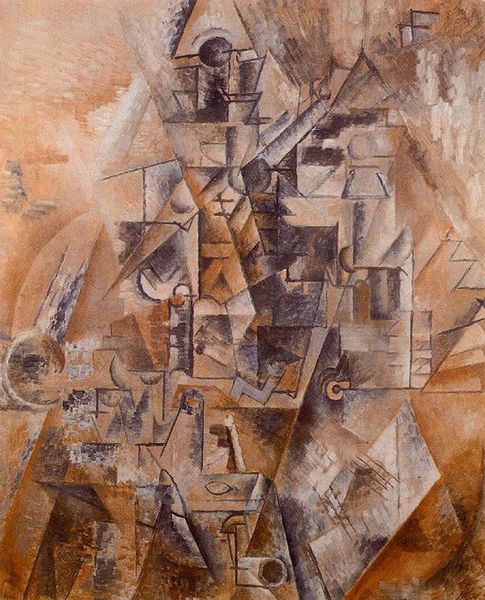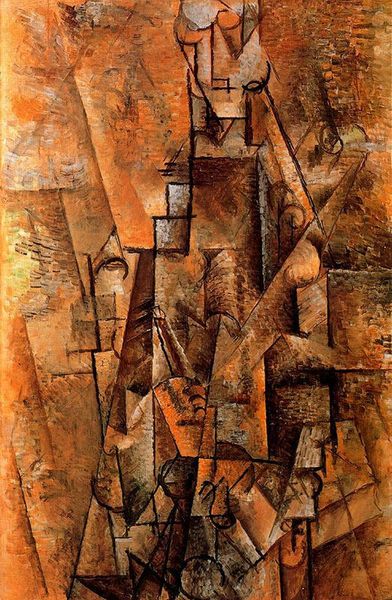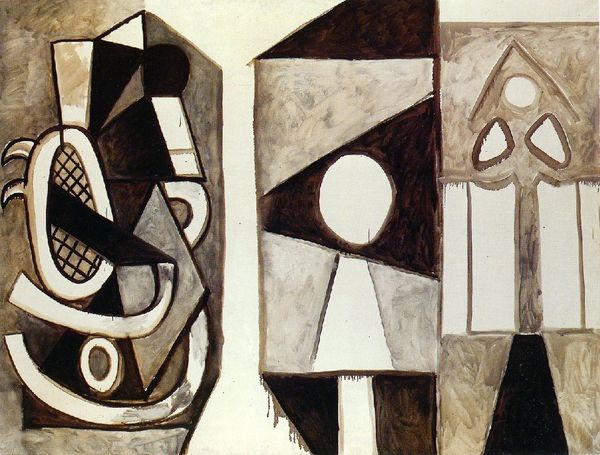
painting, oil-paint
#
cubism
#
abstract painting
#
painting
#
oil-paint
#
painted
#
geometric
#
abstraction
#
modernism
Dimensions: 85 x 73 cm
Copyright: Frantisek Kupka,Fair Use
Curator: Frantisek Kupka's "Drill," painted in 1926, presents a fascinating study in abstract form and mechanical energy rendered in oil paint. Editor: Immediately, I see a world dominated by geometric forms. Circles, cylinders, straight lines... it's a factory exploded, or perhaps an engineer's fever dream. There's an undeniable sense of dynamic movement implied. Curator: Kupka's interest lay in exploring the intersection of art and technology, and "Drill" really emphasizes this. The painting uses Cubist techniques to fragment the mechanical forms. It echoes broader narratives about technology's dominance of society during the Interwar era. The painting speaks to how machines redefine human experiences. Editor: Exactly! Look at the visible brushstrokes; the texture isn't erased, but emphasized, creating an interesting tension between the smooth functionality suggested by the geometric forms, and the clear handmade process that made this artwork come to life. You see the materiality fighting for your attention; you're reminded of the labor involved in the making. Curator: Also the symbolic meaning isn't accidental; Kupka was deeply interested in spirituality and philosophy and how they impacted his work. The drill can represent transformative forces; piercing, changing, evolving…consider its Freudian associations of that piercing image and power structures present within it. Editor: That’s quite a contrast! Here's what grabs me: what specific industrial process is represented here? Are those gears, flywheels, pistons, the core mechanisms of an actual working machine, or is it an abstracted vision of an industrial process. We see these sorts of deconstructions of machines over and over within artwork--what point of mass consumerism do they intersect? What new kinds of factory are emerging from it? Curator: Good question. Thinking intersectionally, "Drill" reminds us that machines also impacted certain communities differently, speeding up some lines of production while increasing the dangers for working class people and communities who had been subjugated by factories. Its creation begs many historical, economic, and identity questions. Editor: The color palette seems deliberately restrained—primarily earth tones and grays punctuated by a couple areas with vivid color. A commentary about using dull materials for mass production, with few highlights left? It really keeps the viewer grounded in its industrial aesthetic and manufacturing processes. Curator: Seeing through both lenses truly illuminates Kupka's achievement here. It's more than just an abstract arrangement of geometric shapes. It captures the mood and anxieties of the machine age while inviting questions of materiality and of the social implications of mechanical creation. Editor: It is precisely this multifaceted approach, this push and pull between material and ideas that makes the piece worth exploring and that keeps us interested in the relationship between machine and creator.
Comments
No comments
Be the first to comment and join the conversation on the ultimate creative platform.
